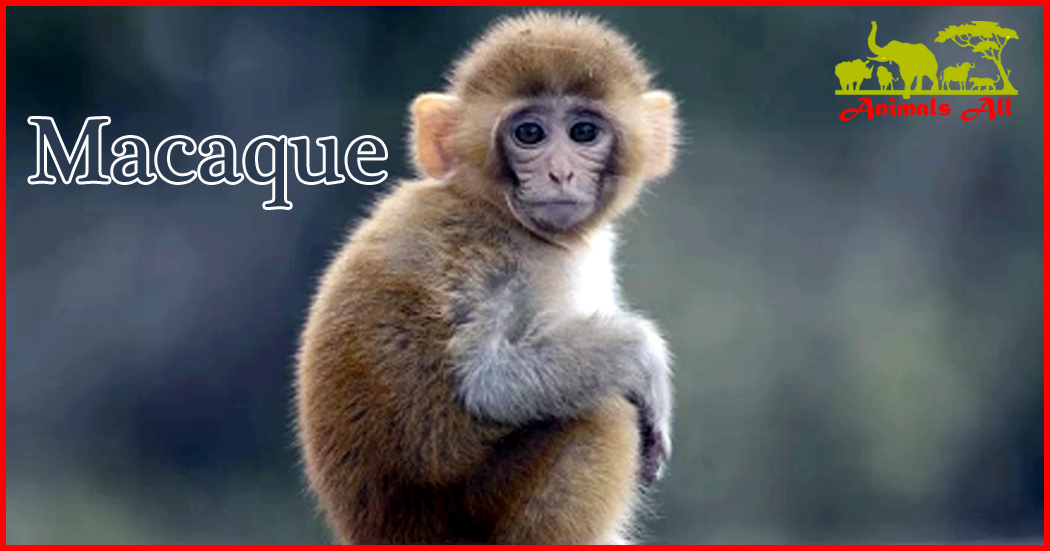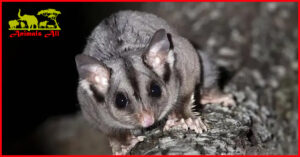
The amazing latest information about macaques
Macaques (scientific name: Macaca mulatta ): 51-63 cm in length. It is a typical macaque, with a short tail and cheek pouches . It has a sturdy body, with an average body length of about 50 cm. Its forelimbs and hindlimbs are about the same length. The thumb can be opposite to the other four fingers, and it can grasp things flexibly. The forehead is low and has a protruding ridge. The head is brown, the back is brown-gray or brown-yellow, the lower part is orange-yellow or orange-red, and the belly is light gray-yellow.
They live in a wide range of places, including grasslands, swamps and various types of forests. They mainly live in dense forests on cliffs, valleys beside streams and river banks, or on sparse forests on rocky mountains, where they live in groups of more than ten or even hundreds of individuals. Macaques feed on leaves, twigs, wild vegetables, etc., and also eat small birds, bird eggs, various insects, and prey on other small animals. They make various sounds or gestures when communicating with each other, and grooming each other’s hair is also an important social activity. Macaques are highly adaptable and easy to domesticate and breed. They are physiologically closer to humans and are often used in various medical experiments . Indiscriminate hunting is the main factor that endangers macaques.

Morphological characteristics
Macaques are the most common monkeys in nature. The head and body are 47–64 cm long, the tail is 19–30 cm long, the male weighs 7.7 kg, and the female weighs 5.4 kg. They are slightly smaller than other monkeys of the same genus, with a thin face and no whorls of hair radiating from the top of their heads. They are brown in color, with a slightly protruding forehead, high brow bones, deep eye sockets, cheek pouches, short shoulder hair, and a long tail that is about half the length of their body.
Most of their fur is grayish-yellow gray-brown, their back is brownish-gray or brownish-yellow, their lower back is orange-yellow or orange-red, their belly is light grayish-yellow and shiny, and their chest, abdomen, and legs are darker gray. Body color often varies between regions and individuals. The face and ears are mostly flesh-colored, and their buttocks are well developed and mostly flesh-red. Adult male macaques are larger than female macaques.
The snout is prominent, the jaws are strong, there are 32 teeth, the nostrils are close together and facing forward and downward, the hands and feet have 5 fingers and toes, with flat nails, and can stand upright. It is diurnal. It has cheek pouches for storing food, low-pointed teeth, and the limbs are usually of roughly equal length.

More
The face is bare and hairless, with clear contours. The eye sockets are formed into rings by bones, so that the eyes are facing forward and the distance between the eyes is narrow. The vision is well-developed and three-dimensional, so it can judge distances and distinguish colors more accurately when moving among the woods, but the sense of smell has degenerated and the structure of the skull has also changed accordingly; the teeth are heterodontic, divided into incisors, canines, premolars and molars.
The cheek teeth are usually mound-shaped teeth and low-crowned teeth. The molars are square and have four lower cone-shaped protrusions, which are suitable for chewing; the clavicle is well-developed, the limb joints are flexible, and the upper wrist and thigh are separated from the trunk, so the front and rear limbs can move freely forward, backward, left and right. The two bones of the forearm and calf are separated and loosely connected, so the front and back feet can be rotated without the need to move the trunk, which is suitable for grasping branches.
Usually there is only a pair of nipples on the chest; there is a cecum; each of the four toes has five fingers (toes), which can grasp branches flexibly and stably, and the ends of the fingers (toes) only cover the flat nails on the back of the finger (toe), and the protruding finger (toe) has developed finger (toe) lines, which are sensitive to touch and have the function of preventing slipping; the palm and plantar surfaces are bare, with two rows of developed leather pads, and the thumbs (toes) of the hands and feet are opposite to the other four fingers (toes) and can grasp.
Habitat
They live in tropical, subtropical and warm temperate broad-leaved forests, from low hills to high altitudes of 3,000-4,000 meters, in secluded and food-rich environments. They are one of the primates with the lowest requirements for habitat conditions. Macaques prefer to live in forest and shrub areas of rocky mountains, especially those with rugged rocks, cliffs, streams, valleys, vines and green trees, which are often the most ideal places for monkeys to live.
Living habits
Living in groups, macaques often live in groups of dozens or hundreds of individuals, led by a monkey king, in the forest. They often like to climb vines and trees, and like to find cliffs and caves. Their range of activities is very large. When the monkeys act in a group, there will be a “sentinel” standing on a high place to keep watch. If they find any abnormal situation, they will send a signal to call the monkeys to move quickly. If the situation is urgent, the macaques can quickly disappear without a trace with their skilled skills in climbing cliffs and crossing dangerous places.
The size of the monkey group varies depending on the quality of the habitat, and generally there are dozens of individuals. During the breeding and food shortage seasons, the groups are often larger, so the range of activities is also larger. They are good at climbing and jumping, can swim and imitate human movements, and show emotions. When they are agitated, they like to throw stones at people.
Feeding habits
They feed on leaves, young branches, wild vegetables, etc. They also eat small birds, bird eggs, various insects, and even earthworms and ants . Macaques are greedy and aggressive when picking wild fruits, and they discard them as they pick them. They only eat sweet and ripe fruits, and discard unripe fruits. Therefore, wherever a group of monkeys pass by, there are often broken branches and discarded fruits everywhere. As a result, the availability of wild fruits is low, so they must expand their foraging range and their activity time is often longer.
King
In real life, every group of monkeys has a monkey king. The monkey king is chosen through “election” from among many outstanding male monkeys. Therefore, the monkey king’s tail is often raised high to show his noble status, while other monkeys dare not raise their tails casually.
Like the US presidential election, the monkey king is replaced every four years and can be re-elected. The throne of the monkey king is created through fierce struggle and fighting between the strong. When the term of each monkey king is about to expire, those male monkeys who feel they have the strength to compete will be eager to try. They will lift their tails in front of the monkey king and challenge him.
Then they will fight with the monkey king. If they defeat the monkey king, they will compete with other challengers. After a life-and-death battle, the final winner will be the new monkey king. Those monkeys who were defeated were covered in blood and had broken limbs. The monkey king who was driven out of office was often expelled from the monkey group and became a lone monkey and wandered around. This shows the cruelty of the competition for the monkey king.
The monkey king
The reason why the monkeys fought so hard for the throne was because the monkey king enjoyed special privileges in the group. The monkey king was very powerful during his reign, and the other monkeys had to obey him and not disobey him. When there was something delicious, the monkey king would always eat it first. Not only did the monkey king eat more and take more, he also enjoyed the privilege of “polygamy”. Most adult female monkeys were his “concubines”, so the monkey king had “three palaces and six courtyards, and many wives and concubines”.
During the breeding and food shortage seasons, the flocks tend to be larger, so the range of activities is also larger. They are shaped like humans, with eyes like beards, sunken cheeks with cheek pouches, where they store food. Macaques have no hair on their buttocks and a short tail. They can walk upright. The gurgling sound is like a cough. They give birth after five months of pregnancy, and often bathe in mountain streams after giving birth.
Distribution area
Origin: Afghanistan, Bangladesh, Bhutan, China, India, Lao People’s Democratic Republic, Myanmar, Nepal, Pakistan, Thailand and Vietnam. Hong Kong, China, United States (Florida).
Reproduction method
They usually go into estrus from November to December. They give birth from March to June of the following year, or twice a year, with one baby in each litter. The average gestation period is about five months, and the lactation period is about four months. Female monkeys reach sexual maturity at 2.5 to 3 years old, while male monkeys reach sexual maturity at 4 to 5 years old, but can participate in mating as early as 6 to 7 years old. In captivity, they can live up to 25 to 30 years.
Homosexuality also occurs from time to time among macaques. Female macaques easily form close relationships and practice a temporary “monogamy” system. A female macaque is only a sexual partner with another female macaque at a fixed time. But during a breeding season, a female macaque can have relationships with several female macaques one after another. Sexual behavior between female macaques is mostly to simulate male genitals and make male-like clucking sounds when excited. Male macaques also have homosexual behavior. But after the sexual games between males are over. They will immediately leave each other, just like the so-called one-night stand in human society.
Subspecies differentiation

Population status
The species is widespread in South, Southeast and East Asia. With significant populations, but increasing human contact has led to habitat fragmentation. Populations in Laos and Vietnam have declined due to hunting, but are still widespread. The population density in Namdapha National Park in India is 0.44 per square kilometer. With an average of 12.3 individuals per population. Populations in other areas are higher, but are relatively sparse in the forests of northeastern India.
Risk factors
Indiscriminate hunting is the main factor that endangers macaques. In the 1950s, there were many monkeys in many monkey-producing areas in China. So the monkeys came down from the mountains and destroyed crops. In order to protect the crops, the masses did everything they could to organize hunting. The relevant departments organized large-scale purchases and exports, resulting in fatal damage to macaque resources. Since then, although in principle only the offspring of artificial breeding can be exported.

